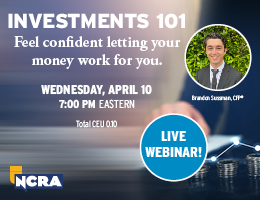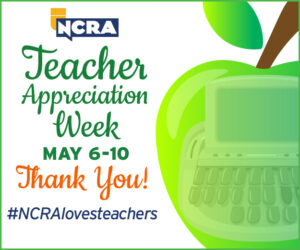As CART providers, our job is to provide communication access. Will we ever truly understand what it’s like to be in our consumer’s shoes? That depends on our own hearing levels later in life, I suppose. I personally believe it’s important to at least try. Nancy Otte is a hearing itinerant teacher in Scottsdale, Ariz., and she is hearing-impaired herself.
For Mother’s Day this year, she attended her first captioned theatrical production of “RED” in Phoenix. After seeing the play, she said, “It was a rather erudite play with only two characters and all philosophical exchange. Naturally, without captioning, it would have been impossible. I was so excited throughout that I almost couldn’t breathe. Being three weeks shy of 65, that was an amazing experience to have for the first time. I can’t tell you what a thrill it was.”
Nancy shared with me her perspective on hearing with new hearing aids. The following is her story.
What I Hear
“You’re hearing, it seems, almost at cochlear implant level!” exclaimed my husband, Jim, this week after 42 years of marriage. Because cochlear implants were unavailable when I was a child, and now being the age that I am, my brain will not hear better with a cochlear implant than with a hearing aid, given the most current information from cochlear implant physicians, unless I lose the little hearing I have left.
It has been four months since I acquired the newest and best hearing aids of my life. There were numerous adjustments until I could hear many things at all. Between adjustments and the brain needing to be trained to hear a different way with the newer technology, it took me four months to adjust, and four months is the fastest acclimation time ever achieved. In years past, an equal acquisition of new skills took between one and four years.
What can I hear with hearing aids now that I couldn’t hear before? A partial list, but off the top of my head:
- More birds outdoors instead of an occasional one bird, and sometimes I can localize where the birds are in general direction.
- The sound of my dog drinking water, although I wouldn’t know it if I weren’t looking at him and timing the sounds with the protrusion of his tongue lapping the water.
- My husband’s fingernails scratching fabric approximately one foot away from me with no other noise in the environment.
- Every vowel of a person speaking to me in a quiet environment from within five feet. If a person says one consonant alone, such as “buh, buh, buh” for “b,” I can hear the “b” or “d” or whatever is being said, but I still need to speechread to tell the difference between “b” or “d,” for example. “Nancy” sounds like “a-ee” and could be “banshee” as well as “Nancy,” for all I know, without speechreading.
- The phone ringing from 30 feet away if the house is quiet, with no other noise.
- More environmental sounds, such as a clock ticking, an air conditioner clicking on, a door clicking open or closed, or music being played in the background of a roomful of people talking.
What I Can’t Hear
What do I still not understand through the ear with hearing aids on?
- The words of a person who is not facing me, whether within 10 feet in a quiet environment or in a lecture situation where only the lecturer is speaking. If the lecturer turns his or her back or turns sideways, the lecturer’s words become undecipherable.
- Television without captioning.
- Movies without captioning.
- Plays without captioning.
- Some people’s speech on the telephone without captioning.
- Many unidentified sounds. A leaf blower could be a pipe organ.
- The speech of people in a group of more than four or five, unless only one person is talking and that person is facing me.




